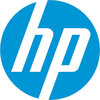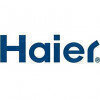
i
Zebronics
Filter interviews by
Zebronics Electronics Engineer Interview Questions and Answers
Zebronics Electronics Engineer Interview Experiences
1 interview found
I applied via Company Website and was interviewed in Mar 2022. There were 2 interview rounds.

(1 Question)
- Q1. Smt techconology and electronics components
Interview Preparation Tips
Electronics Engineer Jobs at Zebronics
Top trending discussions






Interview questions from similar companies

I appeared for an interview before Sep 2023.
(2 Questions)
- Q1. Different SW module
- Ans.
Different software modules are separate components of a software system that perform specific functions.
Software modules are designed to be independent and reusable.
Each module has a specific purpose and can be tested individually.
Examples include authentication module, database module, and user interface module.
- Q2. Define SDLC AND BUGLIFE CYCLE
- Ans.
SDLC is the process of developing software through stages like planning, designing, testing, and deployment. Bug Life Cycle is the stages a bug goes through from discovery to resolution.
SDLC stands for Software Development Life Cycle
SDLC includes stages like planning, designing, coding, testing, and deployment
Bug Life Cycle includes stages like New, Assigned, Open, Fixed, Retest, and Closed
Bug Life Cycle helps in track
Skills evaluated in this interview

Basic core Java, manual testing concept
(2 Questions)
- Q1. Explain SDLC and there steps in brief
- Ans.
SDLC stands for Software Development Life Cycle, which is a process used by software development teams to design, develop, and test high-quality software.
SDLC consists of several steps including planning, analysis, design, implementation, testing, deployment, and maintenance.
Each step in the SDLC is crucial for the successful development and delivery of software products.
For example, in the testing phase, test engineer...
- Q2. Manual testing concept
Skills evaluated in this interview

I applied via Campus Placement and was interviewed before Feb 2023. There was 1 interview round.
(2 Questions)
- Q1. How the testing life cycle works?
- Ans.
The testing life cycle involves planning, designing, executing, and evaluating tests to ensure software quality.
The testing life cycle starts with test planning, where test objectives, scope, and resources are defined.
Next, test design involves creating test cases and test data based on requirements and specifications.
Test execution involves running the tests and recording the results.
After execution, the test results ...
- Q2. How the test plan needs to be created?
- Ans.
A test plan needs to be created by identifying objectives, defining scope, determining test strategies, and documenting test cases.
Identify the objectives of the test plan
Define the scope of the testing
Determine the test strategies to be employed
Document the test cases and their expected outcomes
Include details about test environment and resources
Specify the test schedule and milestones
Identify risks and mitigation str...
Interview Preparation Tips
Skills evaluated in this interview

I applied via Naukri.com and was interviewed before Nov 2022. There were 2 interview rounds.
(1 Question)
- Q1. Ask Basic Details
Case Study related to project
Interview Preparation Tips

I applied via Referral and was interviewed in Mar 2024. There was 1 interview round.
(1 Question)
- Q1. Manual testing concepts, api testing db questions & automation basics

Interview Questionnaire
2 Questions
- Q1. Coding questions on data structures and oops
- Q2. Various questions on cv, projects, por's, etc
Interview Preparation Tips
Experience: Questions were normal like any other aptitude or coding tests.
Tips: Time given was enough for other sections but you need to hurry a little in aptitude part.
Duration: 60 minutes
Total Questions: 60
Round: Technical Interview
Experience: The questions were basic, some where well known like reversing a link list using recursion, designing of car parking lot using concept of oops, find tree height/diameter, etc.
Tips: 1. They ask you to write complete code on paper. This sometimes turn out to be a challenging task when you don't have compiler to correct you on basic things. Practice writing codes on paper.
2. They surely ask questions on oops, like polymorphism, inheritance, etc. besides their definition, also practice writing sudo codes to explain them
Round: HR Interview
Experience: Mainly i was asked questions on my internship experience and POR's.
Tips: They will try to grill you on some questions like 'Why we should hire you?', have a clear reason in your mind. Your other answers should not contradict with your reasons
General Tips: I don't know about other colleges but HP recruits small number of students from my university. Coding questions were average level and can easily be tackled. Many students were rejected after HR interview so don't take it lightly. They do grill you in a very good style if they are in doubt about your selection
Skills: willingness, Enthusiasm, Coding skills, Aptitude skills
College Name: IIT Guwahati

Interview Questionnaire
1 Question
- Q1. All technical questions raised

I applied via Walk-in and was interviewed before Aug 2020. There was 1 interview round.
Interview Questionnaire
1 Question
- Q1. About my last job description
Interview Preparation Tips

I applied via Approached by Company and was interviewed before Jun 2022. There were 5 interview rounds.

(3 Questions)
- Q1. Questiones based on past experience and projects
- Q2. Reason for switching the job
- Q3. Knowledge of CAD softwares
(7 Questions)
- Q1. What is sub cooling in air conditioning?
- Ans.
Sub cooling in air conditioning is the process of cooling the refrigerant below its saturation temperature to improve system efficiency.
Sub cooling increases the efficiency of the air conditioning system by ensuring the refrigerant is in a liquid state before entering the expansion valve.
It helps in preventing flash evaporation of the refrigerant, which can lead to inefficiencies in the system.
Sub cooling is typically ...
- Q2. How is ISEER rating calculated
- Ans.
ISEER rating is calculated based on the weighted average of the cooling performance of an air conditioner under different conditions.
ISEER = (Weighted Cooling Capacity at 100% load x 0.4) + (Weighted Cooling Capacity at 75% load x 0.2) + (Weighted Cooling Capacity at 50% load x 0.4)
The higher the ISEER rating, the more energy efficient the air conditioner is.
ISEER rating helps consumers compare the energy efficiency of...
- Q3. Draw the Refrigeration cycle
- Ans.
The refrigeration cycle is a thermodynamic cycle used in refrigerators and air conditioning systems to transfer heat from a low temperature to a high temperature environment.
The cycle consists of four main components: compressor, condenser, expansion valve, and evaporator.
The refrigerant enters the compressor as a low-pressure gas and leaves as a high-pressure, high-temperature gas.
The high-pressure gas then flows into...
- Q4. Mainstream refrigerants used in household air conditioning
- Ans.
Mainstream refrigerants used in household air conditioning include R-410A, R-22, and R-134a.
R-410A is a popular refrigerant known for its high efficiency and environmental friendliness.
R-22, although being phased out due to its ozone-depleting properties, is still commonly found in older air conditioning systems.
R-134a is commonly used in automotive air conditioning systems but can also be found in some household units
- Q5. Explain 1 ton cooling concept
- Ans.
1 ton cooling concept refers to the amount of heat required to melt one ton of ice in a 24-hour period.
1 ton of cooling is equal to 12,000 BTUs per hour
It is commonly used in the HVAC industry to measure the cooling capacity of air conditioning systems
For example, a 2-ton air conditioner can remove 24,000 BTUs of heat per hour
- Q6. Relation between current, voltage and power
- Ans.
The relationship between current, voltage, and power is described by Ohm's Law, which states that current is directly proportional to voltage and inversely proportional to resistance.
Ohm's Law states that V = I * R, where V is voltage, I is current, and R is resistance.
Power (P) is calculated using the formula P = V * I, where P is power, V is voltage, and I is current.
In a circuit with a constant resistance, an increa...
- Q7. Conversion from BTU to watts and vice versa
- Ans.
1 BTU is approximately equal to 0.29307107 watts. To convert BTU to watts, multiply by 0.29307107. To convert watts to BTU, divide by 0.29307107.
1 BTU = 0.29307107 watts
To convert BTU to watts, multiply by 0.29307107
To convert watts to BTU, divide by 0.29307107
(1 Question)
- Q1. No questions just test
(5 Questions)
- Q1. Would you be comfortable to regularly work extra hours?
- Q2. Introduction about yourself?
- Q3. Why do you want to join LG/ consumer durable industry?
- Q4. If your manager and colleagues are busy with work , how will you manage to learn the things from them?
- Q5. Present Salary and expected salary
Interview Preparation Tips
Zebronics Interview FAQs
Tell us how to improve this page.
Zebronics Interviews By Designations
- Zebronics Technical Support Engineer Interview Questions
- Zebronics Test Engineer Interview Questions
- Zebronics Management Trainee Interview Questions
- Zebronics Logistics Executive Interview Questions
- Zebronics Graphic Designer Interview Questions
- Zebronics Production Engineer Interview Questions
- Zebronics Associate Engineer Interview Questions
- Zebronics Sales Executive Interview Questions
- Show more
Interview Questions for Popular Designations
- Diploma Electronics Engineer Interview Questions
- Electronics Communication Engineer Interview Questions
- Electronics and Electrical Engineer Interview Questions
- Electronic Technician Interview Questions
- Power Electronics Engineer Interview Questions
- Junior Engineer Electronics Interview Questions
- Electronics Service Engineer Interview Questions
- ITI Electronic Mechanic Interview Questions
- Show more
Interview Questions from Similar Companies
Zebronics Electronics Engineer Reviews and Ratings
based on 1 review
Rating in categories
|
Service Engineer
60
salaries
| ₹1 L/yr - ₹3 L/yr |
|
Area Sales Manager
41
salaries
| ₹3.6 L/yr - ₹8 L/yr |
|
Service Coordinator
38
salaries
| ₹1.4 L/yr - ₹3 L/yr |
|
Graphic Designer
35
salaries
| ₹2.5 L/yr - ₹4 L/yr |
|
Executive Accountant
28
salaries
| ₹1.8 L/yr - ₹4.3 L/yr |

OPPO

LG Electronics

Bajaj Electricals

Voltas
- Home >
- Interviews >
- Zebronics Interview Questions >
- Zebronics Electronics Engineer Interview Questions











